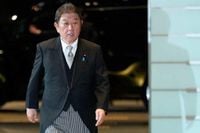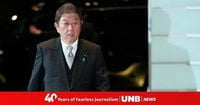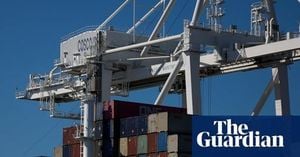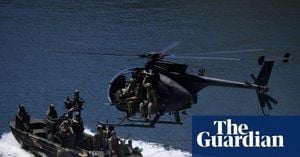Japan is bracing for a pivotal diplomatic moment as it prepares to welcome U.S. President Donald Trump to Tokyo next week, with the nation’s new foreign minister, Toshimitsu Motegi, declaring a renewed commitment to military expansion and security upgrades. This bold announcement, made on October 22, 2025, comes at a time of shifting global alliances and heightened regional tensions, and signals a decisive turn in Japan’s postwar defense posture.
According to reports from The Economic Times and Business Standard, Motegi laid out Japan’s intention to "demonstrate its resolve to enhance defense capabilities," aiming to adapt to the rapidly evolving nature of modern warfare, including threats from drone swarms and cyberattacks. The timing is no accident: President Trump is scheduled to visit from October 27 to October 29, 2025, for his first talks with Japan’s new prime minister, Sanae Takaichi—the country’s first female leader, who took office just days ago after a stretch of intense internal political wrangling.
"We are firmly preparing for President Trump’s visit," Motegi told reporters, emphasizing the significance of the upcoming summit. The foreign minister expressed hope that the meeting would serve as an opportunity for both leaders to deepen the Japan-U.S. alliance and build a strong personal relationship of trust. As AP News and The Economic Times note, this visit will also test Takaichi’s diplomatic mettle, as she faces not only her first encounter with Trump but also two regional summits within her opening days in office.
At the heart of Japan’s new security strategy is a sweeping five-year military buildup, set to run through 2027. This plan includes doubling the nation’s annual defense spending to 2% of gross domestic product—a dramatic increase for a country whose postwar constitution has long enshrined a defense-only principle. The new approach also promotes so-called "strike-back capabilities" with long-range missiles, marking a major break from the strictly pacifist stance that has defined Japanese policy since World War II.
Motegi was candid about the rationale behind these changes. He highlighted the need for Japan to "adapt to emerging new warfare such as drone swarms in the war against Ukraine, as well as responses to cyberattacks." The foreign minister stressed that strengthening military capacity is "essential" given the rapidly changing security environment in East Asia and beyond.
Yet, the policy shift has not come without controversy. The ruling party’s recent alliance with the right-wing Japan Innovation Party—replacing the more dovish centrist Komeito party—has sparked concerns both at home and abroad. As Business Standard and AP News report, critics worry that this new coalition could pave the way for a more offensive military posture under Prime Minister Takaichi, who is widely seen as a security hawk. The possibility of Japan taking on greater offensive roles has fueled debate about the nation’s constitutional identity and its place in the regional balance of power.
Japan’s ambitions are not unfolding in a vacuum. Motegi made clear that Tokyo seeks to reinforce ties not only with the United States but also with other key regional partners, including South Korea, Australia, and the Philippines. At the same time, Japan is pursuing "stable and constructive relations with China," reflecting the complex web of alliances and rivalries that define the Indo-Pacific security landscape.
President Trump’s forthcoming visit is expected to bring tough negotiations. As The Economic Times and AP News detail, Japan anticipates strong pressure from Trump to further increase defense spending to NATO levels of 5% of GDP, purchase more costly American weaponry, and shoulder additional financial support for the roughly 50,000 U.S. troops stationed in Japan under the bilateral security pact. These demands, if realized, would represent a significant escalation in Japan’s military commitments and financial obligations.
Foreign Minister Motegi, however, struck a note of independence. "Our national defense should be based on our own independent decision," he insisted, adding, "What’s important is not the amount or the GDP ratio but what’s in it." This emphasis on sovereign decision-making underscores Japan’s desire to retain control over its security trajectory, even as it navigates the expectations of its most powerful ally.
Motegi also signaled his intention to meet soon with U.S. Secretary of State Marco Rubio to discuss ways to further strengthen the deterrence and response capabilities of the Japan-U.S. alliance. The foreign minister’s return to his post—he previously served from 2019 to 2021 during Trump’s first term—brings a reputation for tough negotiation and continuity to the country’s foreign policy apparatus. He is also charged with following up on the Japan-U.S. tariffs agreement, with the goal of ensuring "sincere and steady implementation" to promote mutual benefits, economic security, and growth.
While the government is "firmly pursuing the ongoing five-year military buildup," Motegi confirmed that Japan will also conduct a review of its strategy and "firmly convey our plans to the U.S. side." There’s talk of moving up the timeline for reviewing Japan’s post-2027 security strategy, which may involve even larger military expenditures and new capabilities.
For Prime Minister Takaichi, the diplomatic and political stakes are high. Having just taken office amid internal party disputes, she now faces the dual challenge of managing relations with the United States and navigating the concerns of a wary public. The alliance with the Japan Innovation Party suggests a willingness to embrace a more assertive defense policy, but this approach will likely be scrutinized both within Japan and among its neighbors.
At the same time, the broader context cannot be ignored. The specter of new forms of warfare—whether in the form of drone swarms, as seen in Ukraine, or sophisticated cyberattacks—has forced many countries to rethink their security doctrines. Japan’s decision to break with its longstanding pacifist tradition is emblematic of a world in flux, where old assumptions no longer hold and new threats demand new responses.
How all these elements will play out in the coming weeks remains to be seen. President Trump’s visit could prove a turning point, setting the tone for the Japan-U.S. alliance and shaping the region’s security architecture for years to come. For now, one thing is clear: Japan is signaling to the world that it intends to take a more active role in its own defense, even as it seeks to balance alliance obligations, domestic politics, and the unpredictable realities of 21st-century warfare.
As the clock ticks down to Trump’s arrival, the world will be watching closely to see whether Japan’s new resolve translates into lasting change—or whether old tensions and new uncertainties will complicate the path forward.





